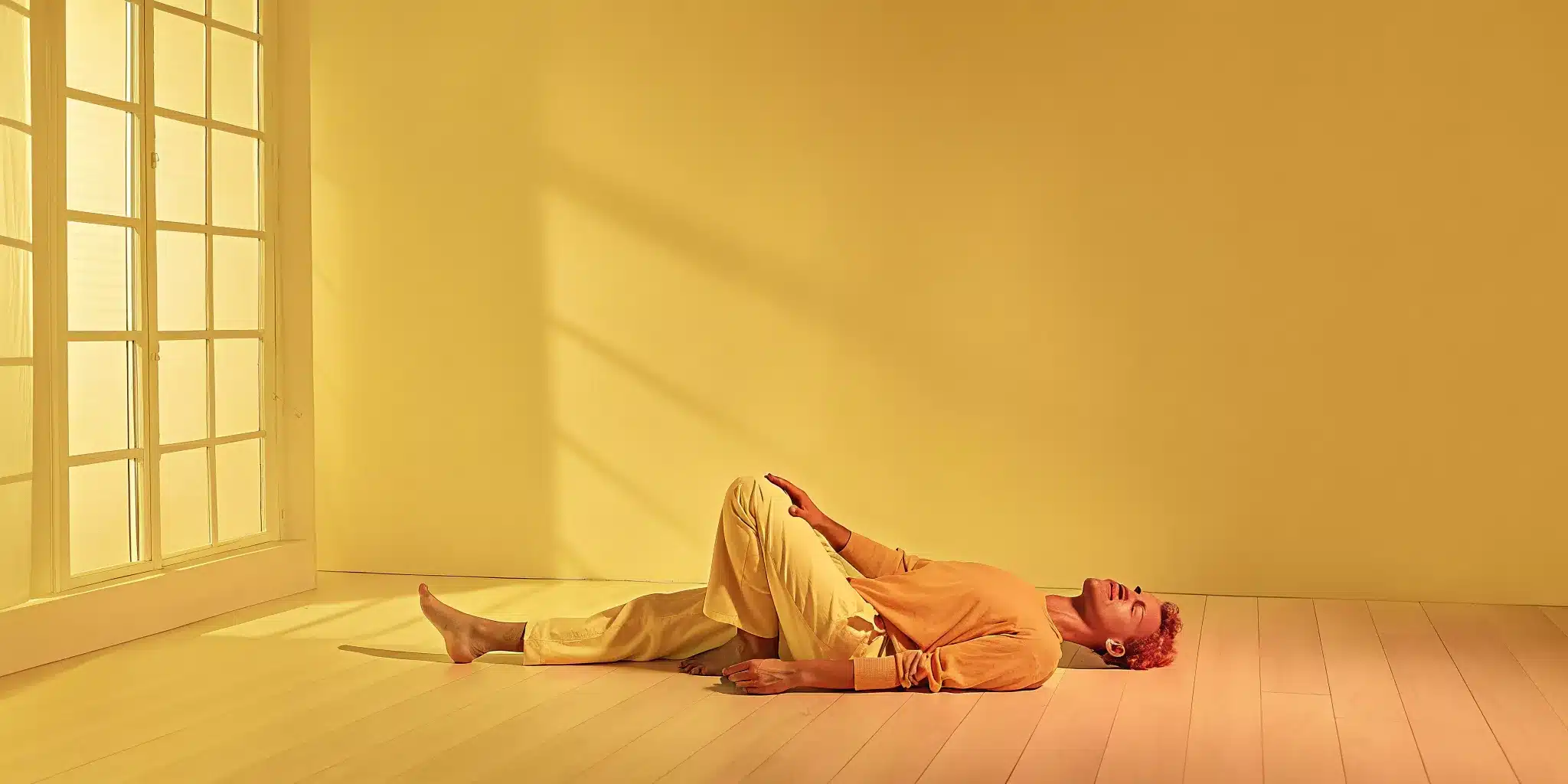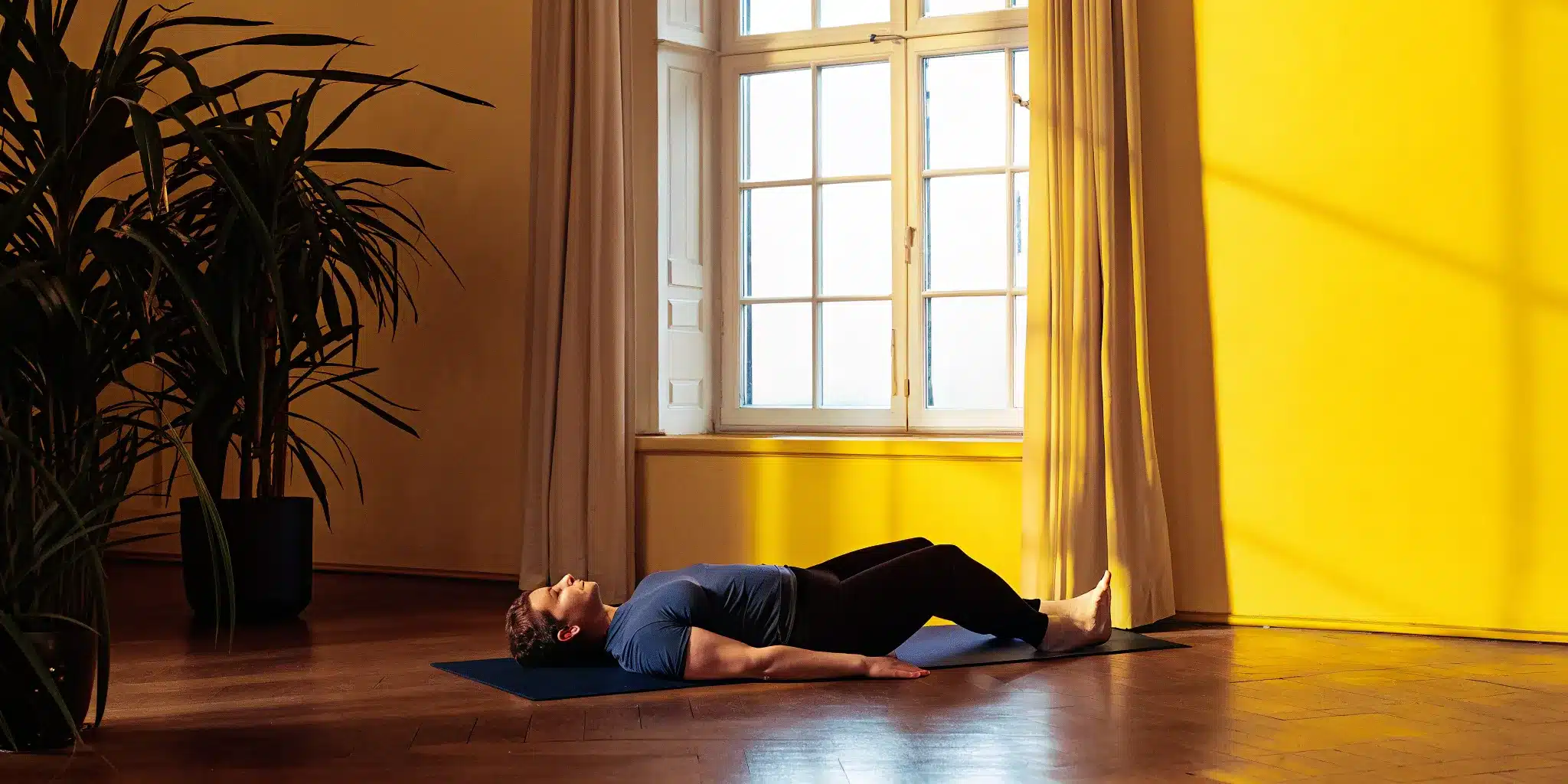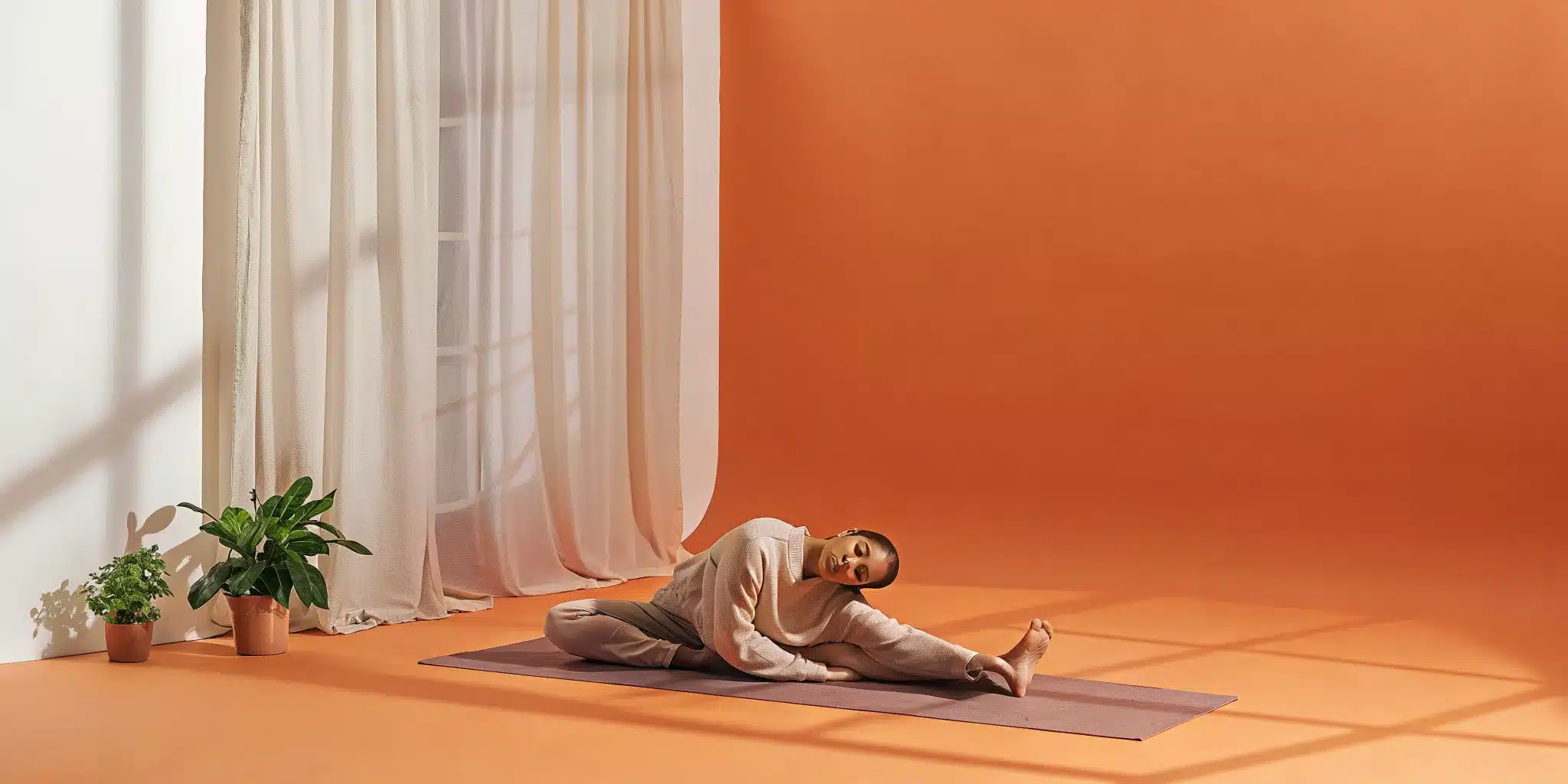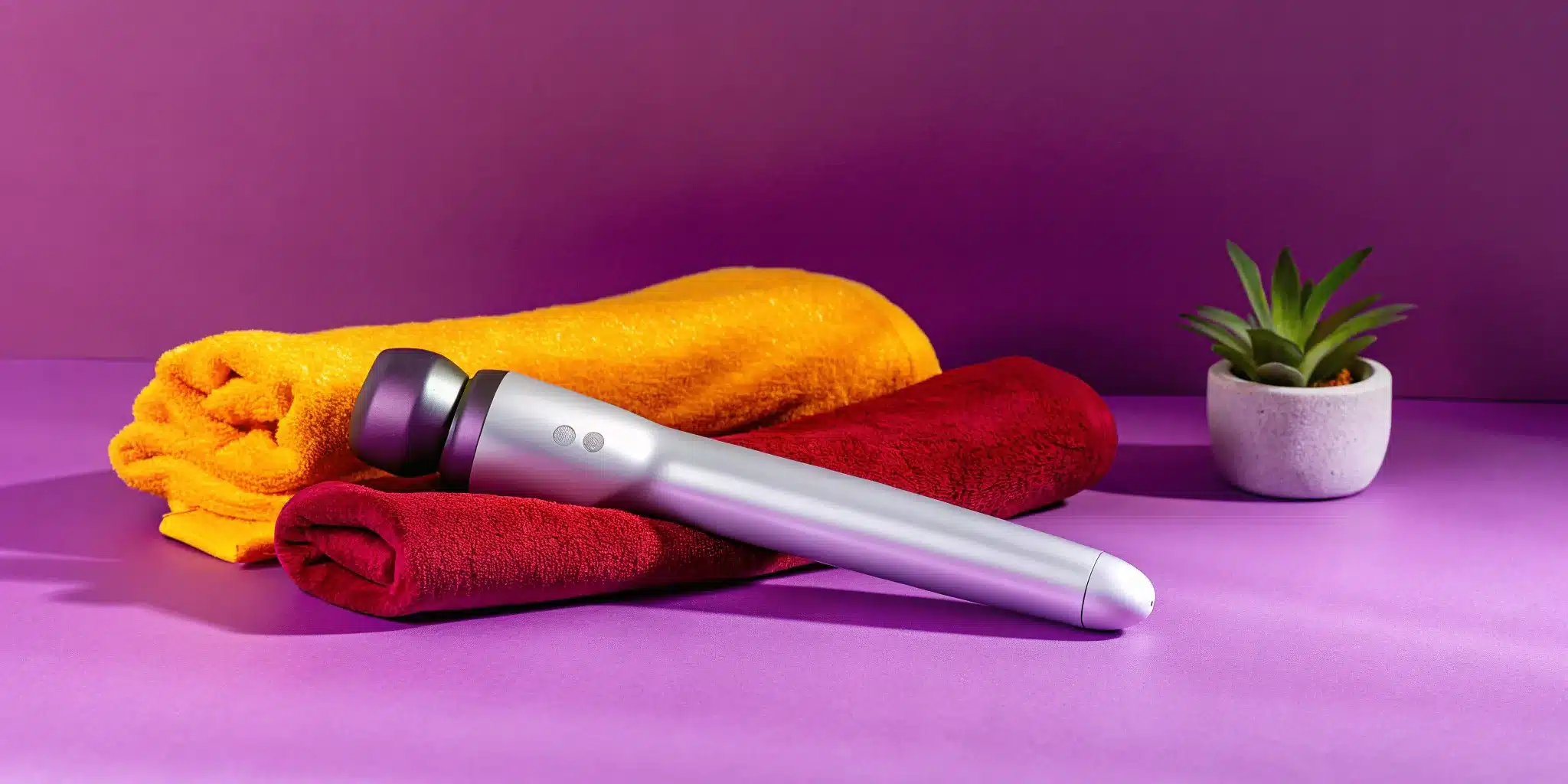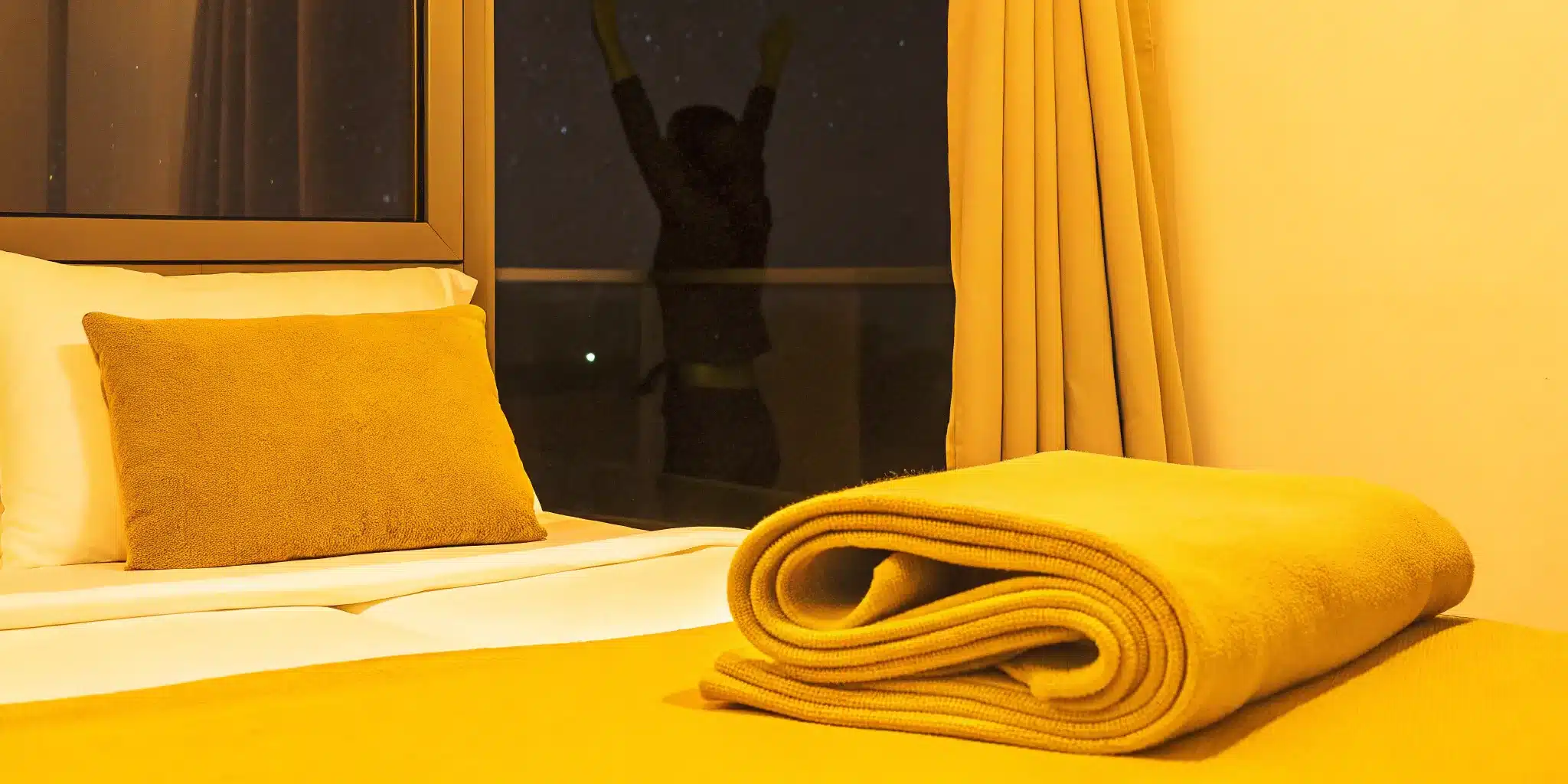Do you ever feel like your mind and body are disconnected? In our busy lives, we often push through physical discomfort, ignoring the tight shoulders or aching hips that are trying to get our attention. Stretching is a powerful way to rebuild that connection. It’s a moving meditation that asks you to slow down, breathe, and pay attention to what your body needs. This simple act of checking in can release stored tension, ease chronic pain, and bring a sense of calm to your mind. It’s not about forcing your body into a certain shape, but about gently inviting it to open up. Let’s explore the 10 benefits of stretching and discover how this practice can help you feel more grounded, mobile, and whole.
Key Takeaways
- Match Your Stretch to Your Goal: Prepare your body for activity with dynamic, movement-based stretches. Save static, held stretches for after your workout to safely improve flexibility and help your muscles recover.
- The Benefits Are More Than Muscle Deep: A regular stretching practice is a powerful tool for your overall well-being. Beyond easing pain and improving mobility, it helps relieve stress, promotes deeper sleep, and strengthens your mind-body connection.
- Create a Personal and Consistent Practice: The most effective routine is one that fits your life. Aim for consistency over intensity, listen to what your body needs each day, and tailor your stretches to support your specific activities for lasting change.
What Happens When You Stretch?
Ever wonder what’s actually going on inside your body when you reach for your toes or lean into a deep lunge? It’s more than just a simple pull. Stretching is a powerful conversation with your muscles, joints, and even your nervous system. When you stretch, you’re sending signals to your body to release tension, increase blood flow, and improve the way you move. It’s a fundamental practice that can change how you feel in your body every single day, helping you move with more freedom and less pain.
How Stretching Changes Your Body
Think of your muscles like well-loved rubber bands. When they’re cold or haven’t been used much, they can feel stiff and short. Stretching gently warms them up, increasing their length and elasticity. This process is what enhances your flexibility and gives you a greater range of motion in your joints. It also boosts blood circulation, delivering more oxygen and nutrients to your muscles. This improved blood flow is key to relieving that post-workout soreness and helping your body recover. By regularly preparing your muscles for activity, you’re also making them more resilient and less prone to strains or other injuries.
The Different Ways to Stretch
Not all stretches are created equal, and the type you do matters. The two main categories are dynamic and static stretching. Dynamic stretches are active movements where you take your body through a full range of motion—think arm circles, leg swings, or torso twists. These are perfect to do before a workout because they warm up your muscles and get your body ready for action. Static stretches, on the other hand, are what most of us picture when we think of stretching. These involve holding a position for about 10 to 30 seconds to lengthen the muscle. These are best saved for after your workout to help your body cool down and prevent injuries.
Common Stretching Myths, Busted
There’s a lot of advice out there about stretching, and not all of it is accurate. Let’s clear up a few common myths. First, the idea that you must stretch before any exercise. The truth is, your muscles stretch best when they’re already warm, which is why dynamic stretching is recommended for a warm-up, not static holds. Another myth is that you can’t over-stretch. You absolutely can! Pushing a stretch too far or too aggressively can lead to muscle strains and injuries. Finally, while stretching is fantastic for improving flexibility and preparing your body for movement, it’s not a magic shield that prevents all injuries. It’s one important piece of a much larger puzzle for staying healthy and active.
Physical Benefits: Move Better, Hurt Less
Stretching is so much more than a quick warm-up or cool-down. Think of it as fundamental maintenance for your body, a way to keep your internal machinery running smoothly so you can move through your day with more ease and less pain. When you commit to a regular stretching practice, you’re investing in your long-term mobility and comfort. The physical rewards are tangible, affecting everything from how you recover after a walk to how you sit at your desk. Let’s look at some of the key ways stretching can help your body feel its best.
1. Improve Your Flexibility and Range of Motion
Ever feel a twinge when you reach for something on the top shelf? That’s your range of motion talking. Regular stretching helps lengthen and increase the elasticity of your muscles, which directly improves your flexibility. When your muscles are more pliable, your joints can move through their full, intended range without strain. This makes everyday activities—like bending down to tie your shoes or looking over your shoulder to back out of a parking spot—feel significantly easier and more fluid. Better flexibility is one of the most immediate and rewarding benefits of stretching you’ll notice.
2. Speed Up Muscle Recovery and Build Strength
If you’ve ever felt stiff and sore the day after a new workout or a long day of yard work, you know what muscle fatigue feels like. Stretching after activity is a fantastic way to help your body recover. It keeps your muscles loose and increases blood flow, which can reduce that next-day ache. By easing post-activity soreness, you’re better able to stay consistent with your fitness routine or daily tasks. This consistency is key, as it allows your muscles to adapt and grow stronger over time. Think of stretching as the reset button that helps your muscles bounce back faster and more prepared for the next challenge.
3. Find Better Posture and Alignment
So many of us spend hours hunched over a desk or phone, which can lead to tight muscles in the chest, shoulders, and back. This tension pulls your body out of its natural alignment, causing that familiar slump. Stretching these key areas helps counteract the effects of poor posture. By releasing tightness in your chest and strengthening your back, you can stand taller and sit straighter with less effort. Improved posture isn’t just about looking more confident; it reduces strain on your spine and can alleviate chronic back and neck pain, helping you feel more comfortable throughout the day.
4. Lower Your Risk of Injury
Think of your muscles like rubber bands. A cold, stiff rubber band will snap under pressure, while a warm, pliable one can stretch without breaking. Your muscles work in a similar way. When they are tight and inflexible, a sudden movement—like tripping on a curb or quickly lifting something heavy—can lead to a strain or tear. By keeping your muscles flexible through stretching, you make them more resilient and less prone to injury. This is crucial not just for athletes, but for anyone who wants to move through life safely and avoid unexpected setbacks from everyday activities.
5. Get Your Blood Flowing
Good circulation is essential for a healthy body. Stretching gives your blood flow a welcome nudge by sending more oxygen-rich blood to your muscles and joints. This increased circulation delivers vital nutrients that help your tissues repair and thrive. It also helps flush out metabolic waste products that can build up in your muscles during activity. This process not only aids in faster recovery but also contributes to overall muscle health and function. That warm, energized feeling you get after a good stretch? That’s the feeling of your circulation getting to work, nourishing your body from the inside out.
Mental Benefits: Feel Calmer and More Connected
Stretching does more than just make your body feel good—it has a powerful effect on your mind, too. When you take the time to stretch, you’re giving yourself a moment to slow down, breathe, and check in with how you’re feeling. This simple act can help quiet the mental chatter and ease the tension that builds up from daily life. Think of it as a moving meditation. By focusing on your body and your breath, you create a space for mental clarity and calm, helping you feel more centered and connected from the inside out.
6. Relieve Stress and Find Relaxation
If you carry your stress in your neck and shoulders, you know how physical tension can weigh on your mind. Stretching is a fantastic way to release that tightness. When you gently lengthen your muscles, you’re not just working out the knots; you’re sending a signal to your nervous system to relax. Taking a few minutes to stretch can help reduce the physical feelings of stress, which in turn helps your mind feel more at ease. It’s a simple, effective tool for letting go of the day’s pressures and finding a sense of calm.
7. Get Better, Deeper Sleep
Tossing and turning at night? Tight, restless muscles could be part of the problem. Incorporating a gentle stretching routine into your evening can help prepare your body for rest. By easing muscle tension and promoting relaxation, stretching can make it easier to fall asleep and stay asleep. You don’t need a long or intense session—just a few simple stretches can help your body unwind. This can lead to a more restorative, deeper sleep, allowing you to wake up feeling more refreshed and ready for the day.
8. Strengthen Your Mind-Body Connection
Stretching encourages you to pay attention to what your body is telling you. As you move through different stretches, you become more aware of where you’re holding tension and what feels good. This focused attention builds a stronger link between your mind and body. Over time, this practice helps you feel more in tune with yourself and more grounded in the present moment. When you combine stretching with mindful breathing, you can create a peaceful state that feels both calming and empowering, strengthening your mind-body connection with every session.
9. Manage Pain Naturally
For anyone dealing with chronic aches, especially back pain, stretching can be a game-changer. It offers more than just temporary relief. Regular stretching helps strengthen the muscles that support your spine and joints, making them more resilient and less prone to strain. This proactive approach can ease existing discomfort and also works to prevent future pain from developing. By making stretching a consistent part of your routine, you can take an active role in managing your pain and improving your overall quality of life, one gentle movement at a time.
10. Improve Your Athletic Performance
Whether you’re a seasoned athlete or just enjoy staying active, stretching can help you perform at your best. Doing dynamic stretches—think gentle, active movements like leg swings or arm circles—before a workout warms up your muscles and gets them ready for action. This preparation can help you move more efficiently and with greater power. A good warm-up not only helps you feel more prepared for your activity but can also contribute to better overall athletic performance and reduce your chances of getting hurt, so you can keep doing the things you love.
How to Start Stretching Safely
Jumping into a stretching routine is exciting, but doing it correctly is what truly protects your body and delivers those feel-good results. The goal is to release tension, not create it. A safe stretching practice is built on listening to your body and understanding a few key principles. It’s not about forcing yourself into a pretzel shape; it’s about gently encouraging your muscles to relax and lengthen. By focusing on proper technique from the start, you can build a habit that supports your body for years to come, helping you move with more freedom and less pain.
Simple, Full-Body Stretches to Begin
Before you start, it helps to know the two main types of stretching. Modern research points to the benefits of both dynamic and static stretching. Dynamic stretching involves active movements that take your joints and muscles through their full range of motion—think arm circles or leg swings. These are great for warming up. Static stretching is what most of us picture: holding a stretch in a still position for a period of time to lengthen the muscle. This is ideal for cooling down or specifically working on flexibility. A simple routine could include gentle neck rolls, shoulder shrugs, a standing quad stretch, and a seated hamstring stretch to address major muscle groups.
The Best Times of Day to Stretch
Timing can make a big difference in how effective your stretching is. It’s best to stretch when your muscles are warm and pliable. Think of a cold rubber band—it’s more likely to snap. The same goes for your muscles. Always warm up with five to ten minutes of light activity, like a brisk walk or jogging in place, before you begin. Alternatively, you can stretch after your workout when your muscles are already warm and receptive. This helps ease post-exercise tightness and kick-starts the recovery process, making it a perfect way to wind down your fitness routine and improve your flexibility over time.
Focus on Proper Form and Technique
How you stretch is just as important as whether you stretch. Move into each stretch smoothly and avoid bouncing, which can cause tiny tears in the muscle and actually trigger it to tighten up as a protective response. Once you feel a gentle pull—never sharp pain—hold the stretch for about 30 seconds. For areas that feel especially tight, you can hold for up to 60 seconds. Remember to breathe! Deep, steady breaths send oxygen to your muscles and help your nervous system relax, allowing you to sink deeper into the stretch safely and effectively. This mind-muscle connection is key to a productive session.
Common Mistakes to Avoid
One of the biggest myths is that stretching is a cure-all for preventing injuries. While a consistent and proper stretching routine can certainly make your body more resilient and less prone to strain, it doesn’t make you invincible. The key is to stretch the right way to get the real benefits. Avoid pushing yourself into positions that cause pain; a good stretch should feel like a gentle release, not a strain. Also, never stretch a cold muscle. Taking just a few minutes to warm up first will protect your body and make your entire session more productive and enjoyable.
Build a Stretching Routine You’ll Actually Do
Knowing you should stretch and actually doing it are two different things. The secret to making it stick isn’t about forcing yourself into a grueling, hour-long session. It’s about building a simple, consistent practice that feels good and fits into your life. A great routine is one you don’t even have to think about—it just becomes part of your day.
The key is to understand that not all stretches are created equal, and timing is everything. You’ll want to use different types of stretches to warm up your body than you would to cool it down. Learning the difference between dynamic and static stretching will help you get the most out of every movement, preparing your muscles for activity and helping them recover afterward. And underneath it all is the simple, powerful tool of your own breath, which can help you relax and deepen each stretch safely. Let’s put these pieces together to create a routine that feels supportive, not stressful.
Create a Daily Practice
Consistency is your best friend when it comes to flexibility. Even five to ten minutes of stretching each day can make a bigger difference than one long session on the weekend. Think of it like brushing your teeth—a small, non-negotiable act of self-care. A regular stretching practice helps release chronic muscle tightness and gradually improves your overall flexibility. You can build this habit by linking it to something you already do. Try a few gentle stretches right after you get out of bed, while your coffee is brewing, or as you wind down before sleep. The goal is to make it so easy and automatic that you barely notice you’re doing it.
Use Dynamic Stretching for Warm-ups
Before you exercise, play a sport, or even do some gardening, you need to prepare your muscles for movement. That’s where dynamic stretching comes in. Unlike static stretches that you hold still, dynamic stretches are active movements that take your joints and muscles through their full range of motion. Think gentle leg swings, arm circles, or torso twists. This type of stretching increases blood flow and body temperature, essentially telling your body it’s time to get moving. Incorporating a few dynamic stretches as a warm-up can help you perform better and reduce your risk of injury.
Use Static Stretching for Cool-downs
After your muscles are warm and have worked hard, it’s time for static stretching. This is the classic “stretch-and-hold” method you’re probably most familiar with. By holding a stretch in a comfortable position for about 30 seconds, you give your muscle fibers a chance to lengthen and relax. This is the best way to improve long-term flexibility and help your body recover after activity. Static stretching helps calm your nervous system and can reduce post-workout soreness. Save these stretches for the end of your workout or for the evening when your body is naturally warmer and more pliable.
How to Breathe While You Stretch
Your breath is one of the most powerful tools for an effective stretch. When you feel a muscle tighten, the natural tendency is to hold your breath, but this actually creates more tension. Instead, focus on taking slow, deep, and steady breaths. As you ease into a stretch, try to breathe normally and hold the position for at least 30 seconds. If you’re working on a particularly tight area, you might even hold it for up to 60 seconds. Inhale as you prepare, and exhale slowly as you move deeper into the stretch. This signals to your nervous system that it’s safe to relax, allowing your muscles to release more fully.
Tailor Your Stretches to Your Body
Your body has its own unique story, shaped by your age, your daily activities, and your health history. Because of this, a one-size-fits-all approach to stretching just doesn’t work. The most effective stretching routine is one that’s designed specifically for you. When you tailor your stretches to your body’s individual needs, you’re not just going through the motions—you’re giving your muscles and joints exactly what they need to feel and function their best.
Thinking about your personal goals is the first step. Are you trying to touch your toes for the first time, recover from a tough workout, or simply move through your day with less stiffness? Your answer will shape which stretches you do and how you do them. Customizing your routine helps you get better results, reduces your risk of injury, and makes stretching a practice you’ll actually look forward to. Let’s explore how you can adapt your stretches to fit your life perfectly.
Adapt Stretches for Your Age
Flexibility can change as we move through different stages of life, but the need to stretch remains constant. No matter your age, stretching is a key part of keeping your body healthy. It helps you move your joints more freely and can make a real difference in your daily comfort and mobility. For younger adults, stretching might focus on preparing for intense physical activity and preventing sports injuries. As we get older, the focus may shift toward maintaining range of motion, easing joint stiffness, and supporting good balance. The key is to listen to your body and choose gentle, effective stretches that feel good at any age.
Stretch for Your Favorite Activities
The way you move throughout your day puts specific demands on your body. Whether you’re an avid runner, a dedicated gardener, or someone who spends hours at a desk, your activities shape which muscles become tight. Tailoring your stretches to counterbalance these patterns can make a huge difference. For example, if you run, focusing on your hamstrings and hip flexors is essential. If you sit at a computer, stretches that open up your chest and shoulders can relieve tension. Stretching can even improve how well you do in sports and other physical hobbies by preparing your muscles for action and helping them recover afterward.
Modify for Health Conditions
If you’re living with a chronic health condition or a past injury, stretching can be an incredible tool for managing symptoms and improving your quality of life. However, it’s crucial to approach it with care and awareness. Pushing through sharp pain is never a good idea. Instead, focus on gentle movements that feel supportive, not stressful. If you have a long-term health issue, it’s always best to talk to your doctor or a physical therapist before starting a new routine. They can help you understand which stretches are safe and beneficial for your specific condition, ensuring your practice helps you heal instead of causing harm.
When to Work with a Professional
While stretching on your own is beneficial, there are times when getting expert guidance can take your progress to the next level. If you’re dealing with persistent pain, stiffness from an old injury, or feel like you’ve hit a plateau in your flexibility, working with a professional is a great next step. A trained stretch therapist or physical therapist can assess your unique movement patterns and limitations. From there, they can create a special stretching plan just for you. One-on-one assisted stretching, in particular, allows you to achieve a deeper, more effective stretch safely, ensuring you get the maximum benefit from every movement.
Advance Your Stretching Practice
Once you’ve built a consistent stretching habit, you might wonder what’s next. If you’re ready to take your flexibility and mobility to a new level, it’s time to think about advancing your practice. This isn’t about pushing yourself into painful positions; it’s about using smart techniques to deepen your stretches, challenge your body safely, and see even more progress. By incorporating new methods and tools, you can continue to improve your range of motion and find greater relief from stiffness and pain.
Train for Progressive Flexibility
This is all about gradually and safely asking a little more from your body over time. Think of it like strength training—you wouldn’t lift the same weight forever and expect to get stronger. To build flexibility, you need to gently challenge your muscles. A balanced approach uses both dynamic stretches (active movements like leg swings) to warm up your muscles before an activity and static stretches (holding a position for 20-30 seconds) to cool down and lengthen those muscles. By consistently and gently pushing your edge, you’ll notice real, lasting improvements in how you move.
Try Partner-Assisted Stretching
Sometimes, the biggest gains happen with a little help. Partner-assisted stretching is a fantastic way to deepen your stretches safely and effectively. A partner can provide gentle, external pressure to help you move just a bit further into a stretch than you could on your own, helping to release tension you might not even realize you’re holding. This could be a friend, a family member, or a trained professional who understands anatomy and how to work with your body’s limits. They can help stabilize you in a stretch and ensure you maintain proper form, which is key to preventing injury and getting the most out of every movement.
Use Equipment to Go Deeper
You don’t need a home gym to enhance your stretching routine. Simple tools can make a huge difference in your ability to achieve a greater range of motion. Using tools like a resistance band, a yoga strap, or even a rolled-up towel can help you gently pull a little deeper into a hamstring or shoulder stretch. A foam roller is another great piece of equipment for releasing tight fascia and working out knots in your muscles, which prepares them for a more effective stretch. These props aren’t about forcing anything; they’re about providing support and leverage so you can relax into the stretch and let your muscles release naturally.
How to Measure and Track Your Progress
Seeing how far you’ve come is one of the best motivators. But how do you track something like flexibility? It’s simpler than you think. You can use a flexibility assessment or just take simple measurements. For example, in a seated forward fold, see how far your fingers can reach toward or past your toes and jot it down. A few weeks later, measure again. You can also take photos or videos to see visible changes in your posture or range of motion. Even just noticing that it’s easier to tie your shoes or reach for something on a high shelf is a valid way to track your progress. Celebrate those small wins
Make Stretching a Lifelong Habit
The real magic of stretching happens when it becomes a non-negotiable part of your life, just like brushing your teeth. But turning any action into a lasting habit takes more than just good intentions. It requires a smart approach, a little patience, and a lot of self-compassion. The goal isn’t to become a contortionist overnight; it’s to build a sustainable practice that supports your body for years to come. By setting achievable goals, connecting with your body, and staying consistent, you can create a routine that feels less like a chore and more like a gift to yourself. Let’s walk through how to make stretching a practice you’ll actually stick with.
Set Realistic, Achievable Goals
If you’re just starting out, the idea of stretching every single day can feel overwhelming. Instead of aiming for perfection, aim for consistency. To see real benefits, you only need to stretch at least two to three times a week. Even five to ten minutes at a time can make a huge difference in your flexibility and how you feel. The key is to start small with a goal that feels almost too easy. Maybe it’s stretching for five minutes while your coffee brews or doing a few simple stretches before bed. Once that feels like second nature, you can gradually add more time or another day. Remember, consistency beats intensity every time.
Incorporate Mindfulness into Your Routine
Stretching is a powerful opportunity to check in with your body and quiet your mind. Instead of just going through the motions, try to be fully present. Pay attention to your breath—inhale as you prepare for a stretch and exhale as you deepen into it. Notice the sensations in your muscles without judgment. This practice of mindfulness can transform your routine into a moving meditation. A regular stretching practice can help you feel more peaceful, especially when you focus on the connection between your breath and your body. It becomes a dedicated time to tune out the noise and simply be.
How to Build Real Consistency
The secret to consistency is making your new habit as easy as possible to do. One of the best ways to do this is through “habit stacking”—linking your stretching routine to something you already do every day. For example: “After I brush my teeth in the morning, I will do three minutes of stretching.” This creates a clear trigger for your new habit. It’s also helpful to understand that different situations call for different types of stretching. Modern research shows the value of using both dynamic stretching (active movements) to warm up before an activity and static stretching (holding a pose) to cool down and improve long-term flexibility.
Adjust Your Routine as Your Body Changes
Your body isn’t the same every day, and your stretching routine shouldn’t be either. Some days you might feel open and flexible, while other days you might feel tight and sore. It’s crucial to listen to your body and adapt. Pushing through sharp pain is a recipe for injury. If you have a chronic health condition or are recovering from an injury, it’s always a good idea to talk to your doctor or a physical therapist before you start. They can help you find safe and effective stretches for your specific needs. A lifelong habit is one that evolves with you, so be kind to yourself and honor what your body needs in the moment.
Related Articles
- STRETCHMED – Committed To Helping You Move Well
- StretchMED Kent Island – STRETCHMED
- StretchMED Annapolis – STRETCHMED
- StretchMED First Time Experience – STRETCHMED
- Stretch Media Landing Design – STRETCHMED
Frequently Asked Questions
How long does it really take to see results from stretching? You’ll likely feel some immediate relief from stiffness right after a good stretch, but lasting changes in flexibility take time. Think in terms of weeks, not days. If you build a consistent practice and stretch at least a few times a week, you should start to notice a real difference in how you move and feel within a month or two. The key is to focus on creating the habit, and the progress will follow.
What’s the most important difference between stretching before and after a workout? The main difference is your goal. Before a workout, you want to prepare your muscles for action, so you should use active, dynamic stretches like leg swings or arm circles to warm up your body. After a workout, your goal is to cool down and improve your overall flexibility. That’s the perfect time for static stretches, where you hold a position to help lengthen and relax the muscles you just used.
How can I tell if I’m stretching too deeply? A productive stretch should feel like a gentle release or a comfortable pull, never a sharp or stabbing pain. If you find yourself holding your breath, wincing, or feeling any kind of pinching sensation, you’ve pushed too far. You should be able to breathe easily and steadily through the entire stretch. Your body knows the difference between a good stretch and a strain, so it’s important to listen to it.
I have chronic pain. Is it still safe for me to stretch? Stretching can be a fantastic tool for managing chronic pain, as long as you approach it carefully. Gentle movement can help ease tension and improve mobility in areas that feel tight and sore. The most important rule is to never push through sharp pain. If you’re living with a specific condition or a past injury, it’s always a good idea to talk with your doctor or a physical therapist first to make sure you’re doing the right stretches for your body.
What if I’m not flexible at all? Is there any point in me starting? Absolutely! That’s actually the best reason to begin. Flexibility isn’t a trait you’re born with; it’s a skill you develop over time. The goal isn’t to fold yourself into a pretzel. It’s simply to improve your own range of motion so that everyday activities feel easier and more comfortable. Start with basic stretches that feel good, and focus on being consistent rather than on how far you can go.



